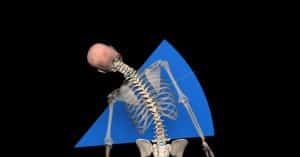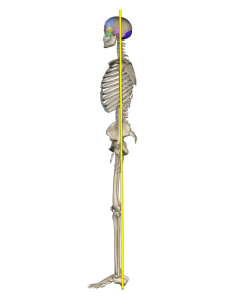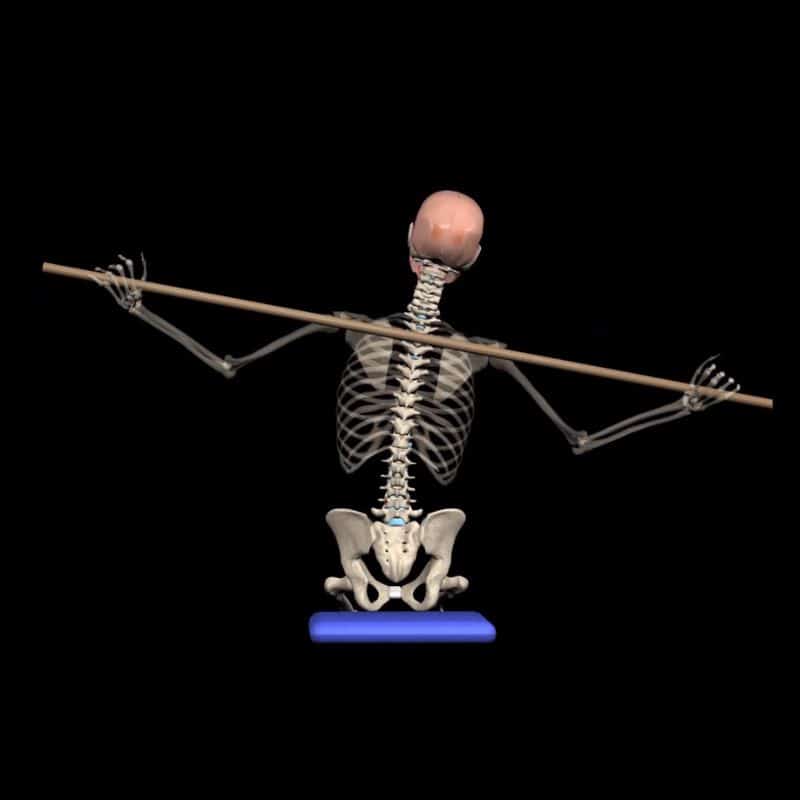Postural assessment is a systematic evaluation of body alignment and balance, which allows us to identify postural deviation and its potential impact on our musculoskeletal system.
In this detailed Muscle and Motion article, we will delve into the significance of postural assessment, its key components, and how you can implement it into your practice.

What Is Posture?
Posture refers to the relative positioning of the body’s joints at a given moment. Each joint’s position influences the positions of other joints.
The “best posture” is the position that applies minimal stress to each joint, promoting optimal alignment and balance. On the other hand, faulty posture refers to any static position that increases pressure on the joints.
Posture can be classified into two categories: static posture and dynamic posture.
- Static posture involves maintaining specific positions of the body and its segments, such as standing, sitting, lying, or kneeling.
- Dynamic posture, on the other hand, involves movement of the body or its segments, such as walking, running, jumping, throwing, or lifting.
How Should Optimal Posture Look?
Proper posture relies on the alignment of the spine, which includes four natural curves in the sagittal plane: the cervical curve, thoracic curve, lumbar curve, and sacral curve. It is essential to maintain these curves without exaggeration to achieve correct posture. In this position, the head should be directly above the shoulders, and the top of the shoulders should align with the hips.
Achieving proper alignment and balance is crucial for maintaining good posture. The line of gravity plays a significant role in determining the optimal positioning of the body. It should pass through specific points, ensuring even weight distribution.
The following points indicate where the line of gravity passes in the sagittal plane:
- Ear: Passes through the ear lobe.
- Shoulder: Passes through the shoulder joint.
- Hip: Passes through the hip joint.
- Femur: Passes through the greater trochanter of the femur.
- Knee: Slightly anterior to the midline of the knee joint.
- Ankle: Anterior to the lateral malleolus.
It is essential to distribute body weight evenly over both feet to maintain proper alignment and balance. These guidelines serve as a valuable reference for assessing and maintaining ideal posture. To learn more about the ideal posture in each plane, check out our Posture APP.

How To Assess Posture?
Assessing posture involves a comprehensive evaluation of the alignment and positioning of various body parts. Here are some common methods used to assess posture
- Visual Observation
The first step is to visually observe the individual’s posture from different angles, including standing, lying on the stomach, or lying on the back. Look for any asymmetry, misalignments, or deviations from the ideal posture.
- Plumb Line
Using a plumb line or a vertical reference, align it with specific anatomical landmarks, such as the earlobe, shoulder joint, hip joint, knee joint, and ankle joint. Assess whether these landmarks fall in line with the plumb line or deviate from it. To learn more about the anatomical landmarks, check out our video on Ideal Postural Alignment in the Median Axis.
- Functional Movement Assessment
Evaluate how the individual moves and performs functional movements, such as squatting, bending, side flexing, spine rotation, or walking. Observe for any compensations, limitations, or imbalances during these movements.
To deepen your knowledge of postural assessment, biomechanics, and the treatment of various postural disorders, we recommend exploring our Posture APP.
Our app offers comprehensive instructions for each assessment test and provides valuable insights for their application in a professional context. Using our Posture APP, you can gain practical expertise and enhance your ability to evaluate and address postural issues effectively.
Use our app today to expand your understanding and improve your professional practice.
At Muscle and Motion, we believe that good posture is essential for your long-term health and well-being.
Our Posture App can help you improve your posture and reduce pain. Sign up for free today!
Written by:
Uriah Turkel, Physical Therapist and Content Creator at Muscle and Motion.
Uriah’s areas of expertise are anatomy, kinesiology, sports rehabilitation, gait analysis, and rheumatology.
Dr. Gill Solberg, “Muscle and Motion” Posture & Yoga apps Co-Founder.


